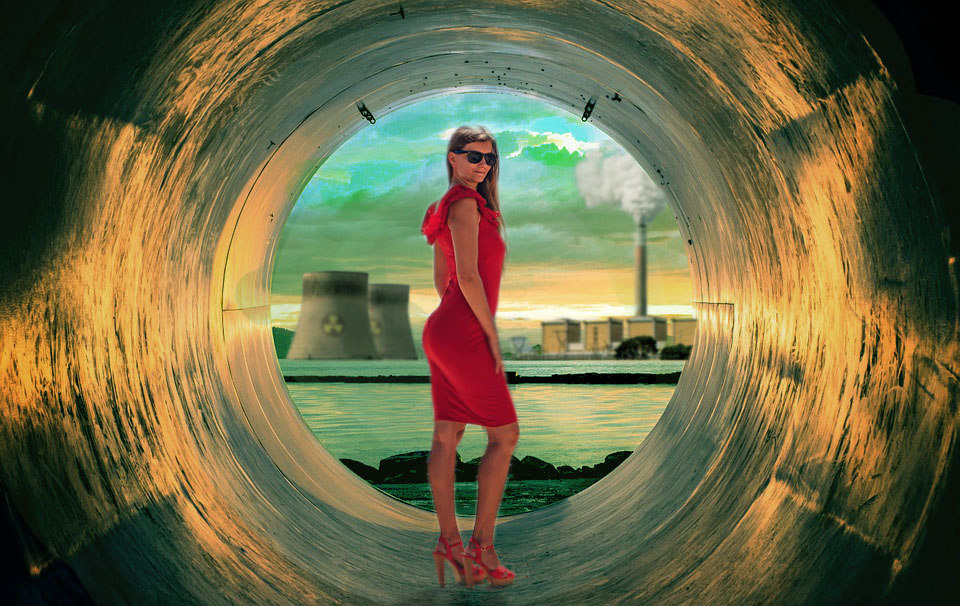Fashion is the world’s second largest pollutant. Practically every step in the production process, from cotton farming to laundering leaves a carbon footprint on the environment. There is no denying the allure of a new pair of jeans or shoes. The option to reinvent and reclaim ourselves through our sartorial choices has been ingrained in our DNA since prehistoric times. Today, that innate inclination is reinforced through our everyday lives, even more so with social media and the rise of fast fashion. So, if you wish to stand out from the crowd, do so with the knowledge and confidence that your clothes come from environmentally friendly sources.
The textile manufacturing process combined with the rise of see-now-buy-now, fast fashion accelerates the rate of the carbon footprint.
The process starts with cotton farming.
According to Alternet.org, a website encouraging community activism for the environment and health care issues through strategic journalism, cotton is the world’s most commonly used natural fiber and is in nearly 40 percent of our clothing. It is also one of the most chemically dependent crops in the world. While only 2.4 percent of the world’s cropland is planted with cotton, it consumes 10 percent of all agricultural chemicals and 25 percent of insecticides.
Cotton farming can severely impact a region’s environment by filling nearby rivers with pesticides and fertilizer, creating a public health crisis and settling onto farm fields, contaminating the soil. Regions being affected by cotton agriculture include Pakistan’s Indus River, Australia’s Murray-Darling Basin and the Rio Grande in the U.S. and Mexico.
Other fabrics, such as polyester and nylon are not biodegradable and an estimated 70 million barrels of oil are used per year producing virgin polyester.
C&EN.org, a site for the scientific organization of the American Chemical Society, reports the textile industry uses more than 8,000 chemicals to make 400 billion square meters of fabric sold annually around the world.

On average, more than a half trillion gallons of fresh water are used in the dyeing of textiles each year. The dye wastewater is discharged, often untreated, into nearby rivers, where it reaches the sea, eventually spreading around the globe. According to the World Bank, 20 percent of global water pollution is caused by textile processing.
Greenpeace, a global, independent campaigning organization that uses creative communication to expose global environmental problems, reports one river in particular, the Citarum River in Indonesia, “disturbing amounts of nonylphenol, an endocrine disruptor, which can be deadly to aquatic life.” The water is also high in alkaline metals, “equivalent to that of lye-based drain openers and had apparently not even received the most basic of treatment.” Greenpeace described the discharge as “highly caustic, which will burn human skin coming into direct contact with the stream and will have a severe impact on aquatic life in the immediate vicinity of the discharge area.”
After clothes are produced, the chemical still remains in our clothes and only comes out after a few washes.
The long-term harm to the environment by the textile manufacturing process will prove difficult to reverse, which is all the more reason to make prevention efforts now.
While it would be ideal to convince textile manufacturers to change their production methods, it is difficult for them to adopt an environmentally friendly method of production for a few reasons. It can be expensive to change machinery, a new production process would involve massive amounts of effort in restructuring companies, all while maintaining consistent production output. It is unknown when the textile industry will change its process, if ever, but until then consumers can do their part to minimize the damage by implementing eco-friendly purchasing habits.
A few simple habits to implement include selling or donating clothes and buying used or vintage clothing. There are local stores such as The Come Up, that carry good quality vintage pieces (remember pieces can also be tailored to reflect changing styles, ala skinny jean or fitted blazer).
Sites such as eBay.com, Amazon.com, Poshmark.com, ReFashioner.com and thredUP.com make buying and selling used or vintage clothes easy.
Many bloggers also sell their used clothes, which are usually still in style, for a fraction of the original price.
That’s not all bloggers are doing, one blogger in particular, Miroslava Duma expressed her concern for the environment and has raised awareness of fashion pollution by creating Fashion Tech Labs Venture Inc. In an interview with Porter magazine, Duma shares how she partners with investors, engineers and scientists to experiment with different materials spanning nanotech, biotech and smart textiles.
Duma mentions that most new innovations often sound like science fiction, noting scarves made from citrus fruits, leather grown from stem cells, blouses made from moisturizing milk protein and T-shirts infused with “anti-microbial” peppermint oil that can be worn up to 20 times “with zero bad smell.” That’s not all, she also brings up, “a hoodie, say, with solar panels that can charge an iPhone or jeans that harvest energy from sea, wind, even the moves you make as you walk.” Her mission and motivation is to “stop the fashion industry being the world’s second largest polluting industry after oil,” and believes in “running the fashion industry on 100 percent renewable energy and resources.”
All of this to say, fashion pollution is a serious but temporary situation and can be helped. Starting with raising awareness and taking action, however big or small, real change can be created. So, this fall as pumpkin spice lattes hit the airwaves, create a sense of hygene and induce purchasing impulses, consider the environment before the next purchase. If purchasing new is unavoidable, consider buying good quality staple pieces that last years and never go out of style. A little black dress, a good pair of jeans or a strong pair of work shoes are great possibilities.












